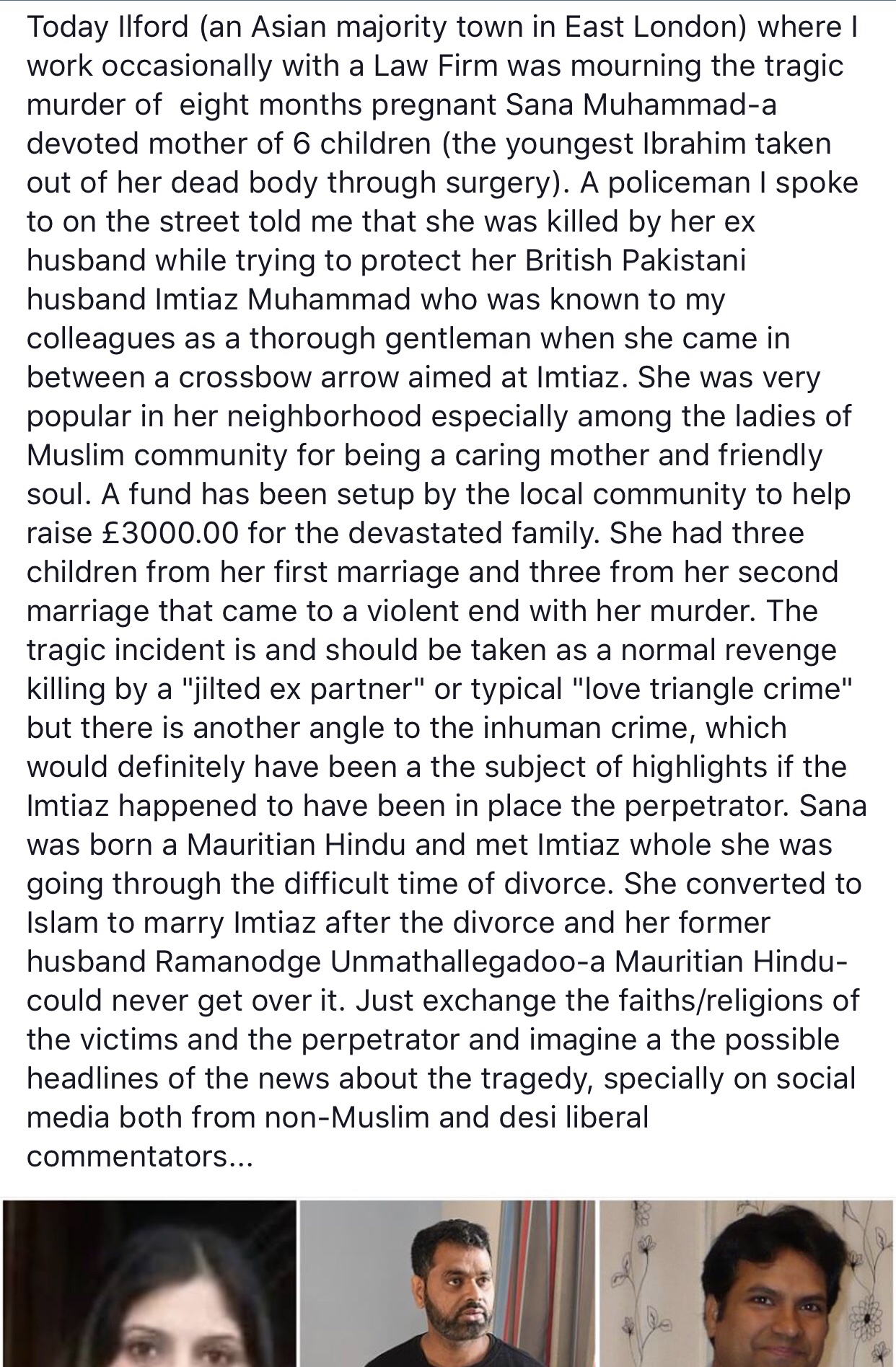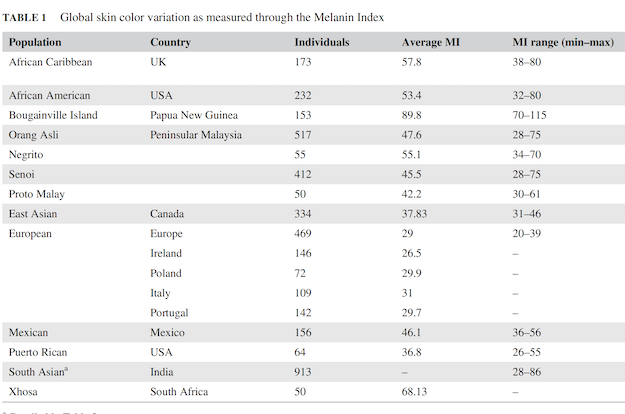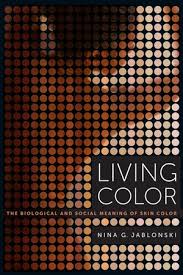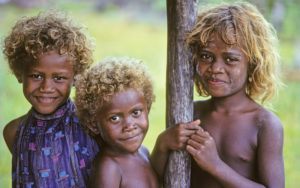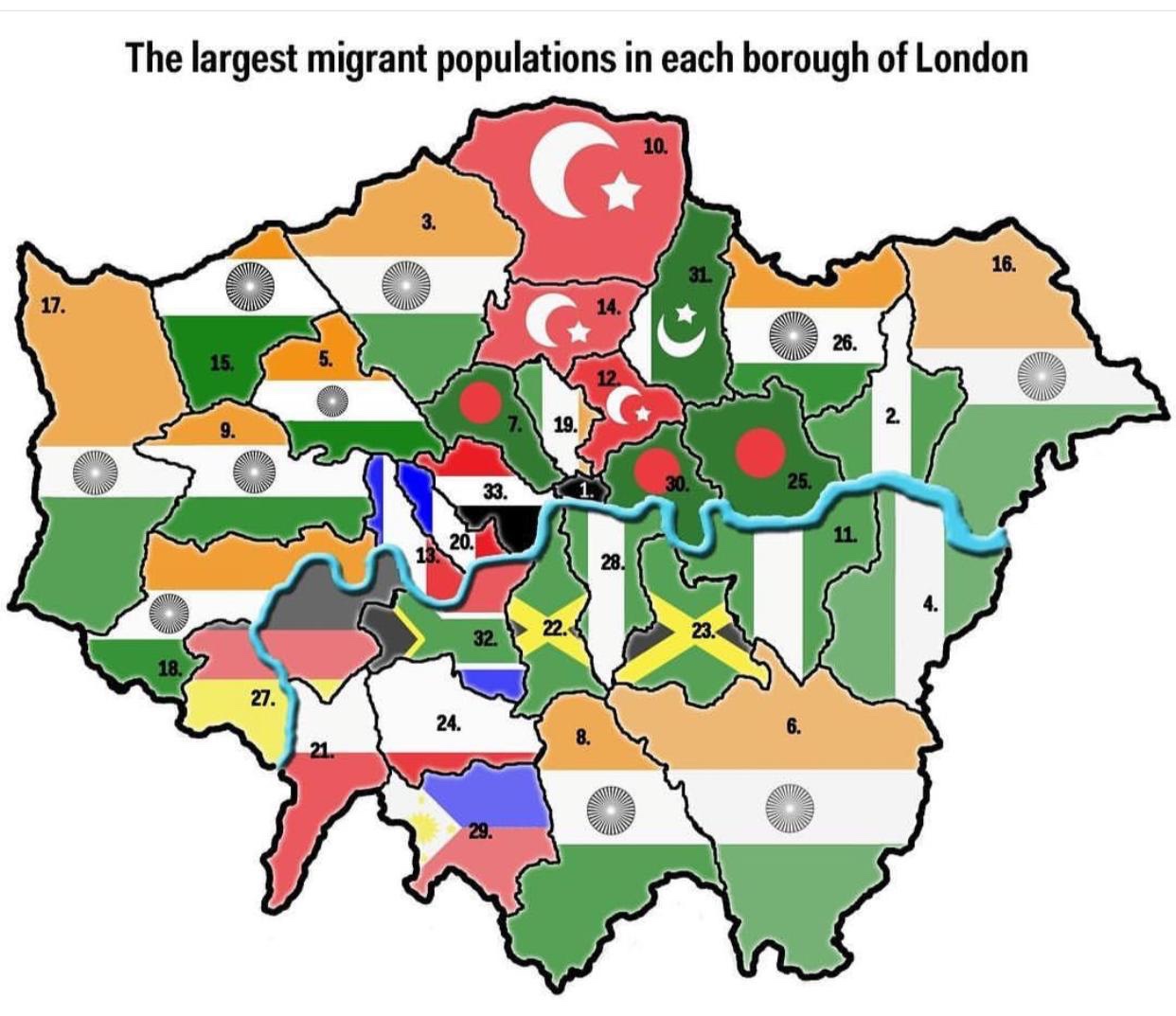When looking at Google Scholar after reading the paper on South Asian pigmentation, I came across this work, The Unfair Selection: A Study on Skin Color Bias in Arranged Indian Marriages:
Underlying the growing popularity of skin-lightening or fairness cosmetics in India is one of the most baseless biases experienced and practiced. Yet, the overriding importance of skin-color especially in context of marriage has been largely unaddressed. This exploratory study examined the influence of skin-color on preference for potential marriage partner. A 2 × 2 (gender × skin-color) between-group experimental design was used. Mothers (N = 108) of individuals of marriageable age group were presented with an option of five marital profiles containing education and work information only. The participants were shown profiles of either males or females depending on whether they had a son or a daughter. Once a profile was chosen, the participant was either shown a photograph of highly attractive fair girl/boy or a highly attractive dark girl/boy. The light-skinned and dark-skinned photograph was of the same person, except their skin tones were manipulated with the use of computer software. Participants were asked to rate how strongly would they recommend the girl/boy as potential bride/groom for their children. As expected, fair-skinned highly attractive people received higher ratings than dark-skinned highly attractive people. However, contrary to our expectations, ratings received for dark-skinned woman were not significantly lower than the ratings received for dark-skinned man. This study shows that the color of skin has the potential to even overpower traits such as general competency and physical attractiveness in both men and women.
The subjects are from the Indian capital. The surprising result is no sex difference. I’m not too interested in the paper’s primary result, but the introduction and discussion, which frames the preference for light skin historically, is of interest.
From the introduction:
While Black scholars in the Unites States have thoroughly examined the link between racism and colorism, there is paucity of information tracing the historical roots of skin-color discrimination in India (Parameswaran & Cardoza, 2009a). Internalization of superiority of fair/white skin has been related to the combined influences of colonialism, caste system,
and globalization. Many South-Asian countries like India, Pakistan, Sri Lanka, Nepal, and so on were ruled by the British for around 200 years; “white” race was the ruler and the “dark” native were the ruled. This led to internalization of superiority and power of the “white” skin and inferiority and powerlessness of the “dark skin” (Speight, 2007). Internalized racism reveals itself in a variety of situations from work environment to social situations where people of color reject or denigrate those with dark-skin. The caste system in India is likely to have given impetus to the notion of superiority of fair skin-color brought by colonial rule (Parameswaran & Cardoza, 2009b; Shankar & Subish, 2016). Higher castes have been perceived to be “fairer” and superior while lower castes have been perceived to be “darker” and inferior. Today, in postcolonial world, globalization has led to increased spread and acceptance of Western beauty ideals in Asian and African cultures (Hunter, 2011; Peltzer, Pengpid, & James, 2016).
First, the Muslim West and Central Asians who arrived in South Asia, described it as a pattern where white people conquered black people. These people were quite aware that South Asians were not black in the way Sub-Saharan Africans were. There were black Africans in the armies of the Muslims, as the Siddi community demonstrates. Nor did the Iranians, let alone the Turks, consider themselves to be of the same people as the Europeans.
But when it came to the metric of skin color, the Muslim ruling class of South Asia was disproportionately very light in complexion and described themselves often as white. The natives were described often, though not always, as black (though more often obviously as “Hindus” or whatnot). When Europeans arrived they did not come as conquerors, but as supplicants to the great Mughal and the other powers. They perceived themselves to be white, just like the elite Muslims, as opposed to the dark-skinned native Indian population, which was mostly, though not exclusively, non-Muslim.
As the 19th century proceeded Europeans, and in particular the British, developed a refined, narrow, and simultaneously biological and cultural conception of whiteness which excluded West and Central Asian Muslims. But this was a process and does not negate the fact that the ruling elite of South Asia was disproportionate of the Muslim religion and very light-skinned in comparison to the populace as a whole for many more centuries than British rule occurred.
Second, “higher castes” are not perceived to be lighter in complexion. The data is clear: higher castes are on the whole on average lighter in complexion. Just as people from the north, and west, of the subcontinent, are lighter in complexion than people from the south and east. This is not a perception dictated by ideology, but biology.
As for whether Brahmins have become “higher” castes recently, my understanding is that they have always been a high caste, and that the British did not give them their high casteness. To be frank, Indian social heirarchies do not need the imprimateur of white Europeans to come into existence, ex nihlo.
And genetics makes it clear that castes seem to have been separated and distinct for around ~2,000 years or so in South Asia. Even before the Muslims!
Now, I don’t know enough about South Asian history and culture to comment on this part:
Thus, skin-color is related to social hierarchy in India; fair skin is often considered to be a mark of higher social standing. However, it is important to note that historically and culturally, dark not white skin was considered to be ideal and desirable in India. Some notable examples are the popularity of God Krishna (literally black) and Draupadi (also called Krishnaa), a character from the epic Mahabharata. Krishna is worshipped in many parts of India whereas Draupadi was considered to be one of the most desirable women in the world. The transformation of ideal skin-color from dark to fair can be traced to the influence of caste system, British imperialism, and global hegemony of whiteness. The caste system also called varna (literally color) accounts for the perceived superiority of fair skin over dark. Owing to the association of fairer skin with upper caste and darker skin with lower castes, skin-color came to signify the social position of an individual in our society. In addition, the racist construction of “dark native” by the British seems to have become a part of our unconscious and is often projected as strong dislike for the “dark other” (Parameswaran & Cardoza, 2009b).
I would be curious about the idea that dark skin was preferred to light skin. The historical genetics makes it clear that lighter invasive populations seem to have arrived and placed themselves on top of darker populations, with some mixing before caste crystallization.
Finally:
The popularity of some dark-skin colored Bollywood actresses like Bipasha Basu, Kajol, Deepika Padukone, and so on suggests that masses are likely to accept a dark-skinned woman if she is perceived as highly attractive.
I do understand that Indian actresses use make-up (or lightening cream) to make their complexion seem fairer than it would otherwise be…but it is clear none of these actresses are actually dark-skinned in the broader South Asian context. They are at best of average complexion.
Now, perhaps you will tell me that I spend time only with kala-batchas or something, I really don’t know. But this whole paper is soaked in postcolonial anti-Western delusional discourse…and then it ends in the shadological delusion that these average complexioned actresses are actually dark skinned! Average South Asians are not light brown, they are medium brown. Medium brown actresses are not dark-skinned, they are dark-skinned for actresses (which is fine, but a different thing than being representative of the population).
Go to Google Images and type “dark-skinned Indian actress” and then “dark-skinned black actress.” In the latter case, the actresses are genuinely dark-skinned. In the former case, only a minority are actresses with the complexion of Sharon Muthu.

